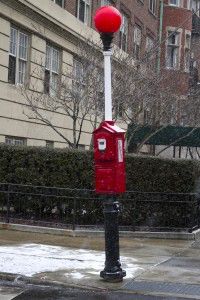
The Boston Fire Department is seeking proposals for a way to add innovative features to more than 2,200 out-of-date fire alarm boxes located in Boston, fire officials said.
“The primary objective of this request is to solicit information about possible designs, services and interactive uses that might be provided through a modern upgrade, in the event the city seeks an alternative to the current system,” according to a release from Roderick Fraser, fire commissioner, on Dec. 31.
The question-and-answer period for people to ask questions before submitting their proposals ended on Jan. 13 and the final date for submissions in Feb. 22, according to information provided by the City of Boston.
The city is only looking for ideas to integrate modern technology with the old fire alarm boxes and plans to create a model by the end of 2013, according to the City of Boston.
“The City of Boston is only seeking letters of interest and ideas from private vendors who are able to physically modify and upgrade the current fire alarm boxes,” the information stated. “The city is exploring ways to prototype a new fire alarm box by the end of 2013, with subsequent expansion to street‐corner fire alarm boxes throughout the city.”
Steve MacDonald, BFD spokesman, said because the fire alarm boxes are still working well, the fire commissioner is seeking ways to make them more universally useful.
“With all our great academic institutions around the Boston area and creative minds, maybe someone can come up with a practical idea that will work,” MacDonald said. “There is no limit to someone’s imagination for what they can be used for.”
Dr. William Channing and Moses Farmer designed the nation’s first fire alarm boxes for the city of Boston in 1852. By the 1880’s, the firealarm boxes were installed in Boston and in other cities across the United States.
Most cities have phased out the fire alarm boxes, but Boston regularly uses the boxes for emergencies.
When a person pulls a lever in the box, a signal is transported by telegraph to the station. The fire department promises a four-minute response time once the signal is registered.
MacDonald said the fire alarm boxes are still in working order.
However, they are considered an alternative to using modern technology.
“The system is a backup,” he said. “We know and acknowledge that people use cellphones and telephones to report fires. This [the fire alarm boxes] system is an insurance policy incase the 911 system goes down and the cell towers go down. This system will still work.”
Chris Osgood, co-chair of the Mayor’s Office of New Urban Mechanics, said in an email many ideas have been proposed thus far.
“We’ve heard of a huge range of ideas — from way-finding stations, to environmental monitoring locations, to mobile phone charging hubs,” Osgood said. MacDonald said one of the ideas proposed was a location to charge one’s cellphone in case of a national emergency such as Hurricane Sandy.
The cost to keep the fire alarm boxes running is $2 million a year, which is one percent of the fire department’s budget, MacDonald said.
Once the proposals are sent in, city officials will look into each idea and see if they can afford to implement the new innovation, MacDonald said.
Osgood said historical preservation is a key factor in picking ideas for the fire alarm boxes.
“This [historical preservation] will certainly be a consideration as we evaluate the responses we get,” he said. “We expect all responses to work within the existing physical designs of the box.”
Ted Gerber, president of the Boston Fire Historical Society, said, although historical preservation is important, innovation is still possible.
“I’m all for innovation,” Gerber said. “As long as it doesn’t interfere with the original purpose of the simple, effective system, then new features would be helpful.”
Gerber said the new feature could make people more aware of the fire alarm boxes.
“I think people would be more aware of them [fire alarm boxes],” he said. “After people see them so many times during the day, it becomes a backdrop to their life.”
This is an account occasionally used by the Daily Free Press editors to post archived posts from previous iterations of the site or otherwise for special circumstance publications. See authorship info on the byline at the top of the page.













